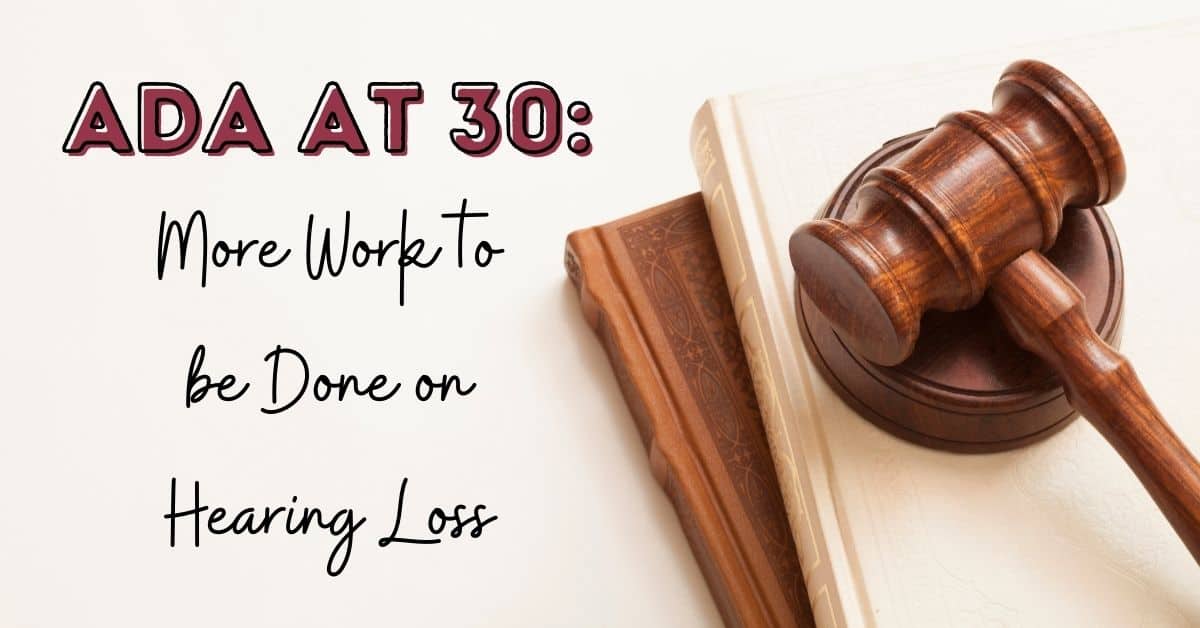This past July the groundbreaking Americans with Disabilities Act turned 30 years old. This legislation set into law remarkable advancements for people with disabilities, including non-discrimination legislation and outlining accessibility rights. While the ADA has changed the world we live in and dramatically increased access and opportunity for millions of Americans, there is still work to be done, especially to help the ADA work for people with hearing loss.
Hearing loss is a disability that over 40 million Americans live with. Living with hearing loss means constantly negotiating your way in a world designed for normal hearing. From conversations at the workplace, to travel announcements at the airport, to an everyday alarm clock, our modern world is too often designed with normal hearing as an assumption.
Looking at ways to adapt and amend the ADA is important at this juncture – over the past three decades we’ve seen an explosion of digital media technologies as well as the rise of the internet. We’ve also seen newfound awareness around hearing loss and the way it presents access challenges to those who experience it.
Pathways Into Technology
With the rise of video conferencing, digital classrooms and streaming live video media, accessibility concerns arise especially for those with hearing loss. While many tech companies boast about the accessibility features of their products, including options for users with hearing loss isn’t a requirement.
People with hearing loss benefit especially from captioning on videos with sound. Captioning means that we have the support of reading what is being spoken, instead of struggling to catch every word. Some digital communication platforms feature automatic captioning while others offer captioning as a service to recorded videos. In the contemporary tech landscape, auto captioning is occasionally available, but certainly not the standard.
Remote working demands a new standard for the premises of the ADA. Just as the ADA strove to make the workplace a fair and accessible place for disabled individuals, we now have to make our remote work arrangements compatible with hearing loss. Automatic captioning is an important way to harness automation and technology for the good of those with hearing loss.
Updating the ADA means making sure that digital doors are opened for people with hearing loss. Requiring new communication and social media features to be introduced with accessibility options helps insure that disabled people are written into the designs of the future.
Visibility and Representation
Perhaps harder to bring into legislation, advancements also need to be made to increase the visibility of populations who manage disabilities that are often invisible – like hearing loss. Visibility includes things like increased educational resources, news coverage and representation in the media. With nearly 15% of the population living with hearing loss, no one should feel they deal with it alone, and yet so many people do not see their challenges represented in the mainstream.
Despite this prevalence, hearing loss is rarely mentioned in entertainment and culture. Even though the challenges of hearing loss are very real and restrict mobility in our lives, culture is seldom created that emphasizes these struggles. Scripting characters with hearing loss into narratives, and including visual markers of hearing loss (such as wearing hearing aids) is part of making the everyday experience of Americans with hearing loss more understood.
Reporting on advancements and resources for people with hearing loss is another way of fulfilling the promise of the ADA. Hearing accessibility has slowly gained traction in public spaces, and these efforts need to be recognized to help expand their reach.
More visibility can help shape accessibility. For instance, face masks with clear panels to facilitate lip reading have been gaining traction with support from disability right activism. The loss of lip reading also means new accessible communication pathways need to be introduced.
Seeking Treatment for Hearing Loss
We celebrate three decades of the transformative Americans with Disabilities Act. We’ve seen how our country has improved its approach to equality and accessibility over the past 30 years.
While there is still a way to go to reach a world where accessibility is the norm, we know that the future looks bright. Pushing the ADA to new frontiers will help make sure that people with hearing loss are fully included in this struggle for rights and access.
If you have any questions about hearing loss treatment, contact us today!

